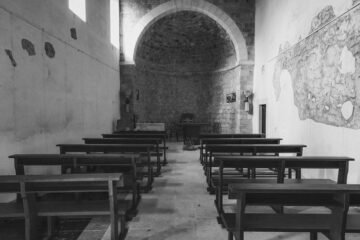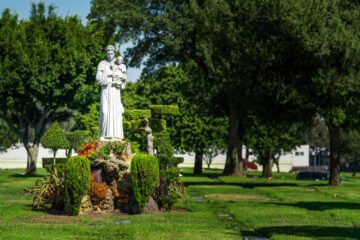Ember Days & Ash Wednesday: Exploring Catholic Traditions of Repentance and Renewal
“`html
The journey of faith is often enriched by periods of reflection and spiritual renewal. Within Catholicism, these moments are marked by practices like fasting and prayer, which are not only expressions of devotion but also pathways to deeper understanding. One such practice, the observance of Ember Days, has a long and rich history within the Church, offering opportunities for personal reflection and connection to God. This article delves into the history, significance, and modern observance of Ember Days, highlighting their unique role in the Catholic faith.
What Are Ember Days?
Ember Days are sets of three consecutive days — Wednesday, Friday, and Saturday — that occur four times a year, aligning with the changing seasons. Each set of Ember Days marks a significant period in the liturgical calendar:
- Spring Ember Days: After Ash Wednesday, marking the beginning of Lent.
- Summer Ember Days: After Pentecost Sunday, celebrating the descent of the Holy Spirit.
- Autumn Ember Days: After the Feast of the Holy Cross (September 14), commemorating the crucifixion of Jesus Christ.
- Winter Ember Days: After the Feast of St. Lucy (December 13), honoring the early Christian martyr and symbol of light.
These days were historically dedicated to fasting, abstinence, and prayer, serving as a time for the faithful to express gratitude for God’s blessings and to prepare themselves spiritually for the upcoming seasons.
A Journey Through Time: The History of Ember Days
The practice of observing Ember Days can be traced back to the early Church, with its origins rooted in the ancient Jewish tradition of fasting. It was formalized by Pope Gregory VII in the 11th century, becoming a significant part of the Catholic liturgical calendar. The term “Ember” itself originates from the Latin phrase “Quatuor Tempora,” meaning “four times,” reflecting the four times these days occur throughout the year.
A Shift in Observance: The Second Vatican Council
The liturgical reforms of the Second Vatican Council in the 1960s brought about a shift in the observance of Ember Days. The new General Roman Calendar made their observance optional, leaving it to local bishops’ conferences to decide their relevance within their respective regions. Consequently, Ember Days have gradually become less common in many parts of the world, though they remain a meaningful practice for some devout Catholics.
The Importance of Humility in Spiritual Practices
While fasting and abstinence are valuable spiritual disciplines, Catholic teaching emphasizes the importance of practicing them with humility and discretion. As Jesus himself taught in the Gospel of Matthew:
“When you fast, do not look somber as the hypocrites do, for they disfigure their faces to show others they are fasting… But when you fast, put oil on your head and wash your face, so that it will not be obvious to others that you are fasting, but only to your Father.”
— Matthew 6:16-18
This passage underscores that fasting should be a personal act of devotion, not a means of seeking external recognition. Announcing one’s fasting can diminish its spiritual value and lead to pride, ultimately contradicting the humility that fasting is meant to cultivate.
Modern Observance: Connecting to Tradition
Though not universally observed today, Ember Days offer a meaningful way for Catholics to connect with their faith’s rich heritage. Individuals may choose to observe them in various ways, such as:
- Personal Fasting: Choosing to abstain from food or specific types of food.
- Prayer and Reflection: Devoting time to prayer, meditation, and reading Scripture.
- Almsgiving: Engaging in acts of charity to support those in need.
By embracing these practices, individuals can honor the traditional significance of Ember Days while aligning their personal devotion with the spirit of humility and discretion.
Common Questions and Answers
What is the purpose of observing Ember Days?
Observing Ember Days allows Catholics to engage in a deeper form of prayer and reflection, seeking God’s guidance and seeking to align their lives with His will. These days also serve as a reminder of the cyclical nature of life and the importance of expressing gratitude for God’s blessings.
Are Ember Days mandatory?
No, Ember Days are not mandatory in the Catholic Church. Following the reforms of the Second Vatican Council, their observance became optional, allowing local bishops’ conferences to determine their relevance in their regions.
What are the specific guidelines for fasting during Ember Days?
The traditional guidelines for fasting on Ember Days are similar to those observed during Lent. This typically involves eating one full meal with two smaller meals that do not equal a full meal. Abstinence from meat is also encouraged.
Can I choose to observe only certain Ember Days?
Yes, individuals are free to choose which Ember Days they wish to observe. The important aspect is to approach the practice with sincerity and devotion, recognizing its spiritual significance.
What if I am unable to fast for health reasons?
If someone is unable to fast due to health reasons, they can still participate in the spirit of Ember Days by engaging in other forms of spiritual practices, such as prayer, reflection, and acts of charity.
Conclusion: A Path to Spiritual Renewal
The observance of Ember Days within the Catholic Church provides a unique opportunity for individuals to deepen their relationship with God. While their prominence may have shifted over time, their underlying message of spiritual renewal and seeking God’s guidance remains timeless. By embracing these practices with humility and sincerity, Catholics can connect with their faith’s rich tradition and embark on a journey of spiritual growth, fostering a deeper appreciation for the blessings of God’s grace in their lives.
“`




